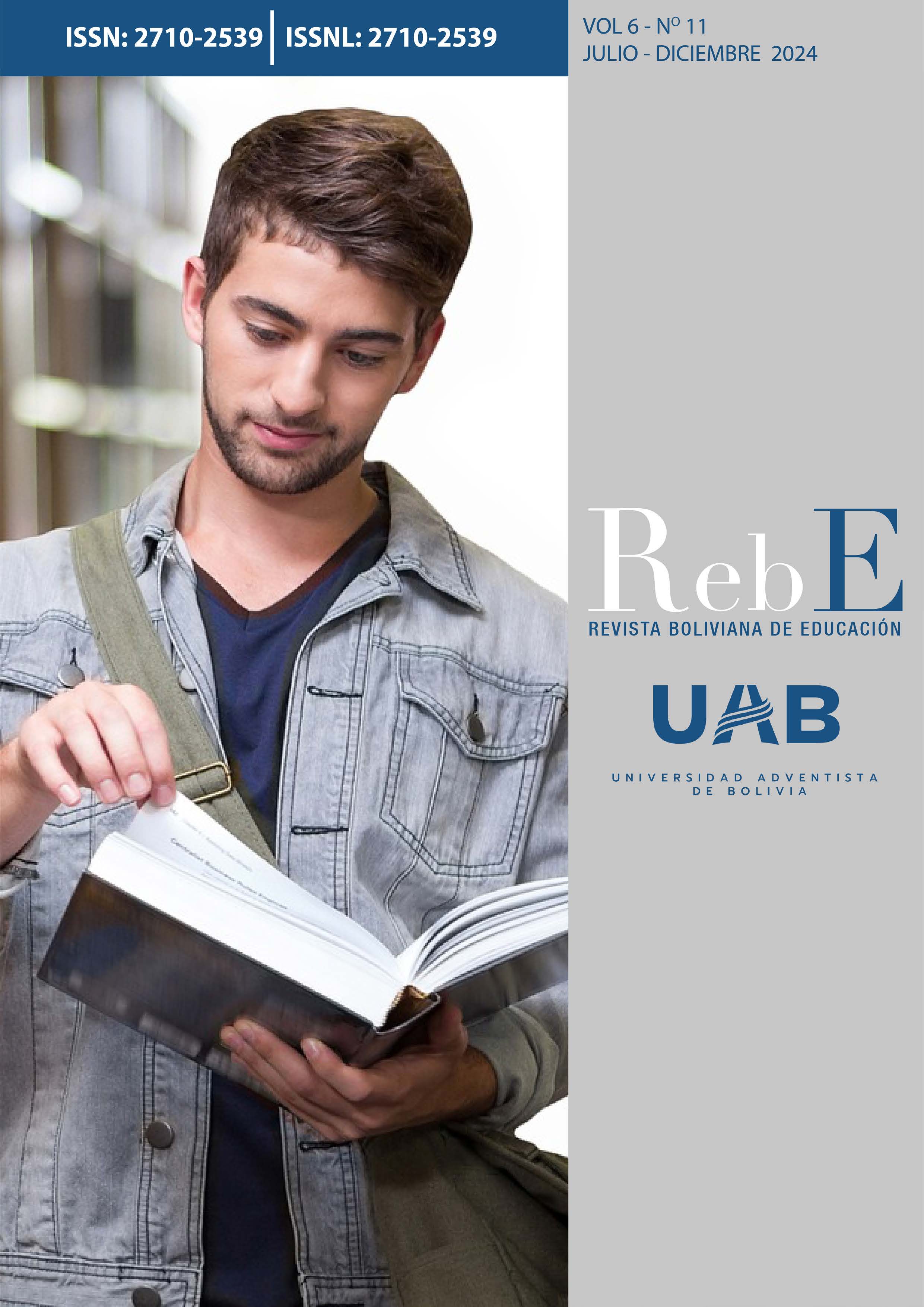Emerging technoscience in Bolivia: Challenges and opportunities for the inclusion of women in STEM areas
Tecnociencia emergente en Bolivia: Retos y oportunidades para la inclusión de mujeres en áreas STEMMain Article Content
Emerging technoscience in Bolivia presents a complex landscape characterized by significant advances in technological innovation and, simultaneously, by persistent gender gaps in the areas of science, technology, engineering, and mathematics (STEM). The objective is to analyze the main challenges and opportunities for the inclusion of women in emerging technoscience areas in Bolivia, examining current public policies, systemic barriers, and initiatives to promote gender equity. The approach is a mixed approach that combines documentary analysis, a systematic literature review, and secondary data analysis. The results reveal that, although Bolivia has made progress on some gender parity indicators in higher education, significant underrepresentation of women persists in technological careers and scientific leadership positions. The conclusions indicate that the identified opportunities include the growth of the emerging technology sector, government digital inclusion initiatives, and international cooperation programs.
La tecnociencia emergente en Bolivia presenta un panorama complejo caracterizado por avances significativos en innovación tecnológica y, simultáneamente, por persistentes brechas de género en las áreas de ciencia, tecnología, ingeniería y matemáticas (STEM). es analizar los principales retos y oportunidades para la inclusión de mujeres en áreas de tecnociencia emergente en Bolivia, examinando las políticas públicas actuales, las barreras sistémicas y las iniciativas de promoción de equidad de género. El enfoque es mixto que combina análisis documental, revisión sistemática de literatura y análisis de datos secundarios. Los resultados revelan que, aunque Bolivia ha logrado avances en algunos indicadores de paridad de género en educación superior, persiste una significativa subrepresentación de mujeres en carreras tecnológicas y en posiciones de liderazgo científico. Las conclusiones señalan que las oportunidades identificadas incluyen el crecimiento del sector tecnológico emergente, iniciativas gubernamentales de inclusión digital y programas internacionales de cooperación.
Downloads
Article Details
Arredondo, F. G., Vázquez, J. y de la Garza, J. (2019). STEM and gender gap in Latin America. Revista de El Colegio de San Luis, 9(18), 137-158. https://www.scielo.org.mx/scielo.php?pid=S1665-899X2019000100137&script=sci_abstract&tlng=en
Bascopé, M., Reiss, K., Morales, M., Robles, C., Reyes, P., y Duque, M. I. (2020). Latin American STEM policy: A review of recent initiatives on STEM education in four Latin American countries. En International Handbook on STEM Education (pp. 673-690). Taylor y Francis. https://doi.org/10.4324/9780429021381-41
Cabello, N. (2024). Mujeres en la política científica del Estado Plurinacional de Bolivia. Journal de Comunicación Social, 15(2), 45-62. https://jcomsoc.ucb.edu.bo/a/article/view/1311
Frigo, L., dos Santos, A. y Reinehr, S. (2024). Mapping women stem initiatives in latin american countries: Bolivia, brazil and peru. En Information Technology & Systems (pp. 401-410). Springer. https://doi.org/10.1007/978-3-031-54256-5_38
García, A., Mena, J., García, F. y Pascual, A. (2020). Gender equality in STEM programs: a proposal to analyse the situation of a university about the gender gap. 2020 IEEE Global Engineering Education Conference (EDUCON), 1824-1830. https://doi.org/10.1109/EDUCON45650.2020.9125326
García-Holgado, A., Díaz, A. y García-Peñalvo, F. J. (2019). Engaging women into STEM in Latin America: W-STEM project. Proceedings of the Seventh International Conference on Technological Ecosystems for Enhancing Multiculturality, 232-239. https://doi.org/10.1145/3362789.3362902
Jimenez, E., Guzman, I. y Lens, A. (2025). Gender Disparities in STEM Education and Academia: an Open Data Approach from Bolivia. Proceedings of the 2025 Computers and People Research Conference, 21, 1-2. https://doi.org/10.1145/3716489.3728452
Kuhlmann, S., Stegmaier, P. y Konrad, K. (2019). The tentative governance of emerging science and technology—A conceptual introduction. Research Policy, 48(4), 1091-1097. https://doi.org/10.1016/j.respol.2019.01.006
Organización de Naciones Unidas ONU Mujeres y UNESCO. (2020). Mujeres en ciencia, tecnología, ingeniería y matemáticas en América Latina y el Caribe. https://lac.unwomen.org/sites/default/files/Field%20Office%20Americas/Documentos/Publicaciones/2020/09/Mujeres%20en%20STEM%20ONU%20Mujeres%20Unesco%20SP32922.pdf
Organización para la Cooperación y el Desarrollo Económicos (OECD) (2025). Gender Differences in Education, Skills and STEM Careers in Latin America and the Caribbean. OECD Publishing. https://www.oecd.org/en/publications/2025/05/gender-differences-in-education-skills-and-stem-careers-in-latin-america-and-the-caribbean_125d2445.html
Plan International. (2024). María José: A STEM Girl Breaking Taboos and Changing Mindsets. https://plan-international.org/bolivia-en/case-studies/maria-jose-a-stem-girl-breaking-taboos-and-changing-mindsets/
Robinson, K., Audétat, M., Joly, P. y Lacroix, B. (2021). Enemies of the future? Questioning the regimes of promising in emerging science and technology. Science and Public Policy, 48(6), 814-825. https://doi.org/10.1093/scipol/scab044
Rosales, M. (2020). Relación entre la inclusión y el abandono de mujeres jóvenes en carreras y áreas STEM y TIC. Revista de la Universidad La Salle en Bolivia, 12(2), 145-162. http://www.scielo.org.bo/scielo.php?pid=S2071-081X2020000200009&script=sci_arttext
Universidad Católica Boliviana. (2023). Representación social de las mujeres en áreas STEM en Bolivia. https://portal.scz.ucb.edu.bo/public/Imagenes/General/2023/Infografia2.pdf
Wajcman, J. (2007). From women and technology to gendered technoscience. Information, Community and Society, 10(3), 287-298. https://doi.org/10.1080/13691180701409770

